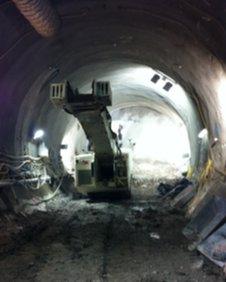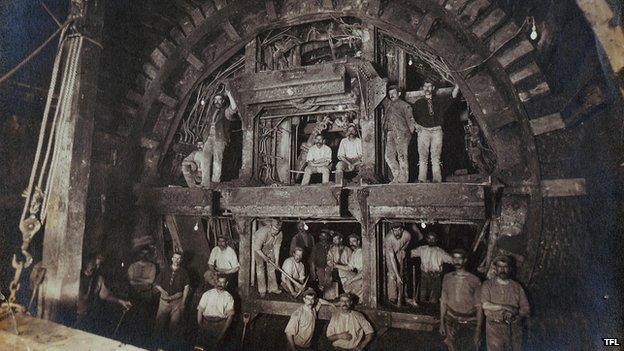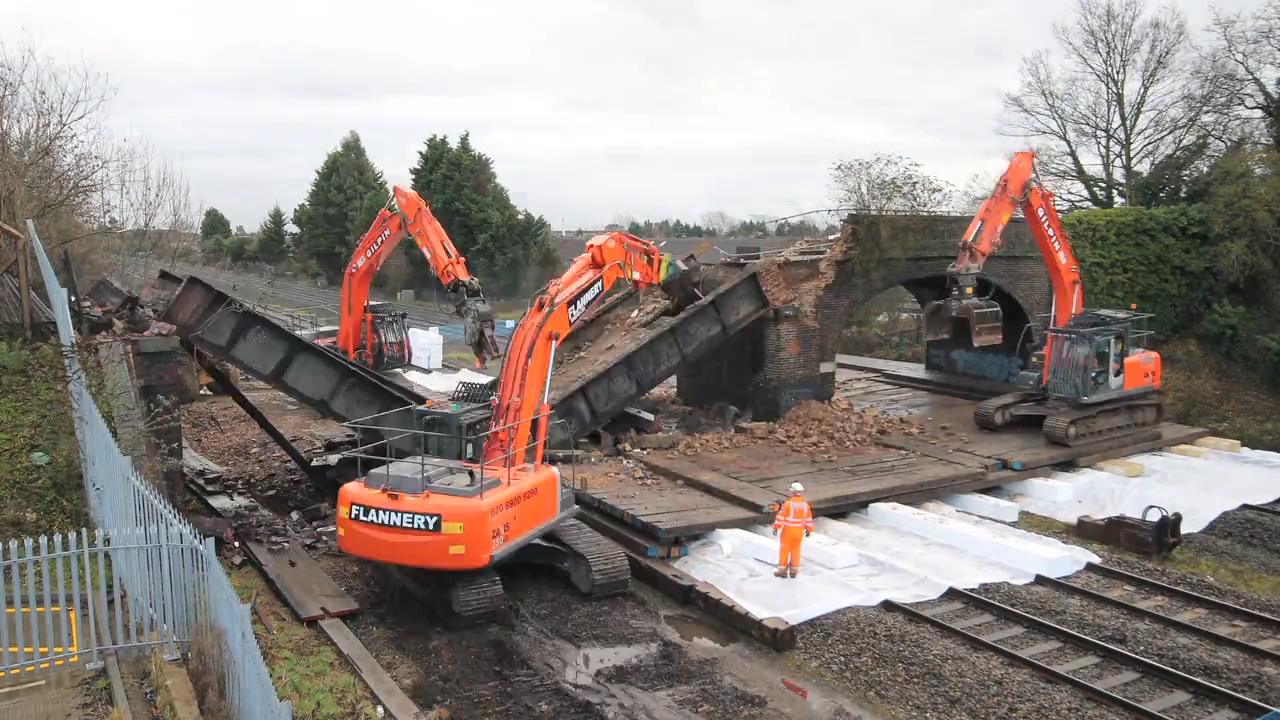Crossrail: Passion deep below west London
- Published
- comments
Two of the 26 miles worth of tunnel have been bored
The mining engineers on the multi-billion pound Crossrail, external project are certainly a passionate lot.
One told me that being involved in Crossrail was like his own Hoover Dam (the huge US dam built during the Great Depression) in terms of scale and personal achievement.
Many of these mining engineers have already worked on projects like the Channel Tunnel and the Jubilee line extension so they're not easily impressed.
Tunnelling is well under way on Crossrail, but for most Londoners the only thing they will have noticed are blue hoardings along its route.
I've been trying to get inside the tunnels for a while and on Thursday I was given the first rare opportunity to have a look and film in the tunnels deep under west London.
Below your feet
Compared to the power tunnels in Park Royal these tunnels are much larger.
So far 3km have been bored. There have been a few issues - for example, a hopper that carries soil at Paddington collapsed - but Crossrail workers now think they are making good progress.
I visited the tunnel boring machine TBM2 - called Ada - and to get to see her you have to take a 10-minute train journey in the tunnel.
Built in Germany, the machine is like something from a Ridley Scott sci-fi movie.

The 26 miles of tunnels will be completed by 2018
It bores out the clay and behind that the concrete slabs are slotted in. It works round the clock and only stops for maintenance.
If it stops it increases the risk of movement in the tunnel.
It's now under south Paddington and soon it will be under Hyde Park and so far the tunnel has only moved 1cm.
On average the team does 100m a week but it has done 200m in some parts.
On board there are toilets and a kitchen and it is hot, noisy work. Eventually there will be eight of these boring under London for the next three years.
The project will cost £15bn and it is being paid for by government, Transport for London (TfL), fare-payers and business rates. It will be finished in 2018.
This is just the beginning; while it may not be high profile at the moment, it is happening and it's happening below your feet.
- Published9 January 2013

- Published4 January 2013

- Published24 December 2012
